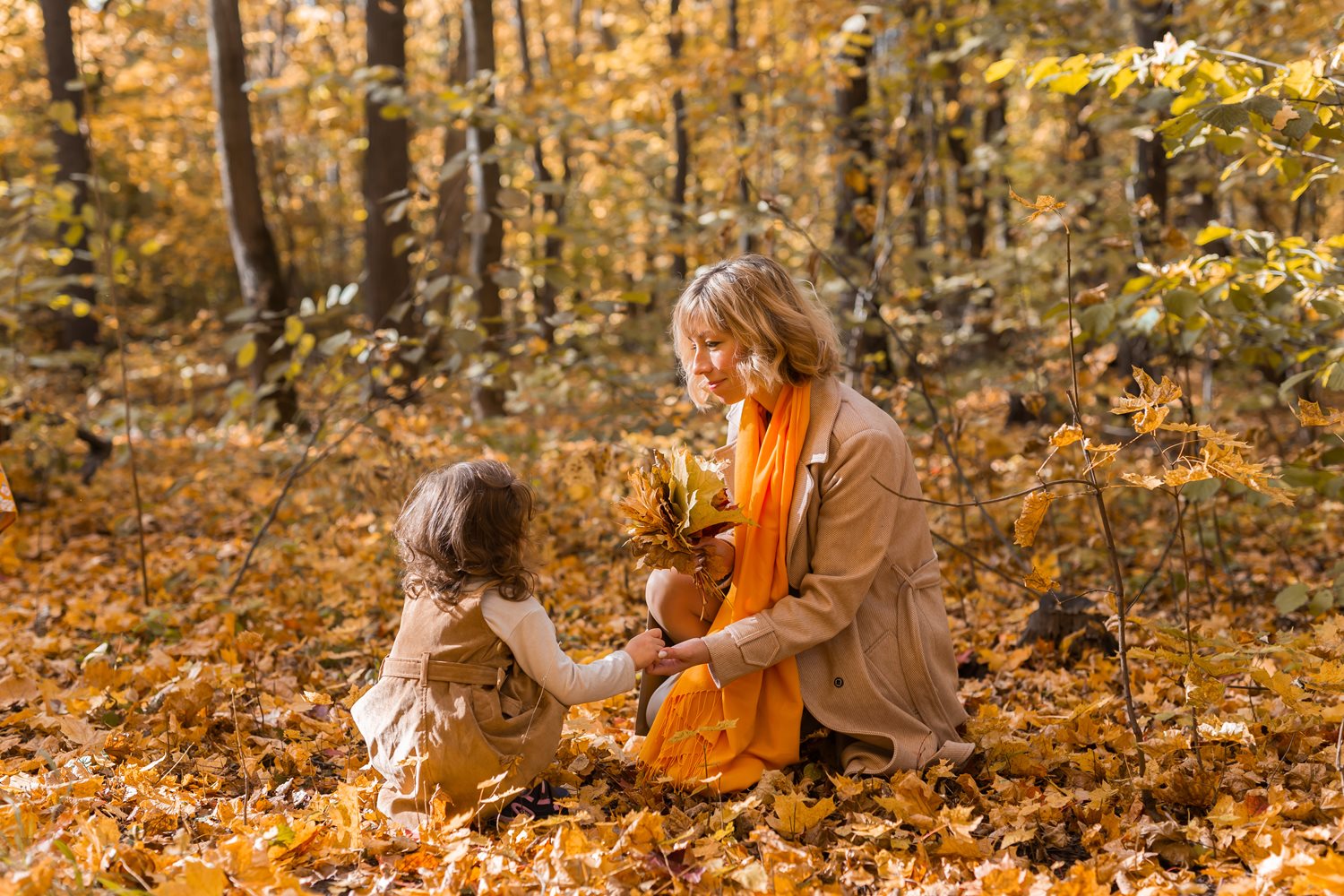E's and P's with Falling Leaves: Tips to Strengthen Your Child's Language and Thinking

Every conversation you have with your child gives them opportunities to build their language skills. If your child is preschool aged (3—5 years old), you can give their language learning an extra boost by adding the “E’s and Ps” to your everyday conversations.
What Are the E's and P's?
The E’s and P’s are seven ways to expand your child’s thinking and use of language. They are: Explaining, Experiences, Emotions, Evaluating, Predicting, Pretending/Imagining and Problem-solving.
When you use the E’s and P’s, you encourage your child to use their knowledge and experience, as well as their problem-solving skills, to do things like:
- compare and contrast
- explain why things happen
- evaluate ideas and form opinions
- understand the perspectives of others
- predict what will happen in the future
- think of creative solutions
When you have conversations that support your child to think this way, you encourage them to use their language skills to talk about topics beyond what is happening in the moment. Conversations like this encourage your child to use more complex language with words like “because”, phrases with “if” and “then”, and different verb tenses. This is also the kind of language your child will be expected to use in school, so building this language now sets them on the path to academic success.
Using Falling Leaves to Build the E's and P's
Whether your child likes jumping in giant piles of leaves, kicking through them with her boots, or collecting them in different colours, one thing is for sure – the fall season provides lots of opportunities for interesting and enjoyable conversations.
Here are some tips for how you can build the E’s and P’s while out on a walk among the autumn leaves:
Explain
It’s important for your child to understand not only what is happening, but why something is happening. This builds their understanding of cause-and-effect and encourages them to come up with their own explanations for things.
What you could say:
“The reason the leaves are falling is because the trees go to sleep for the winter. They’ll grow new leaves when it’s warm and sunny again in the spring.”
Evaluate
Encouraging your child to offer their opinion promotes deeper thinking and builds her confidence with expressing her thoughts and ideas.
What you could say:
“Do you think it would better to leave the leaves on our lawn or should we rake them? Why?”
Predict
When you encourage your child to think about what will happen next, you help them think and talk about events beyond the present moment and also use what they already know to talk about the future.
What you could say:
“What do you think will happen to all these leaves on the ground?”
Pretend/Imagine
Encouraging your child to imagine themselves in a new or unfamiliar situation builds empathy and helps them understand others’ perspectives.
What you could say:
“What do you think it would be like to be a leaf falling from the tree?”
Problem-solve
Creating opportunities for your child to solve problems encourages them to draw upon their background knowledge and reasoning skills and promotes the use of more complex language.
What you could say:
“Uh-oh, it looks like your pants got all wet from playing in the leaf pile. What should we do?”
More E's and Ps
Can you think of any other ways you could use the E’s and P’s during fall-related events and activities? Remember, you can use the E’s and P’s in many different activities throughout the day to inspire enjoyable, language-building conversations.
For tips on how you can use the E’s and P’s to build your child’s early literacy skills, take a look at the articles below:
More Than ABCs: Building the Critical Thinking Skills Your Child Needs for Literacy Success
How to Build Literacy at Home
Similar articles by tag:
Early Literacy | Shared Book Reading | Critical Thinking | Es and Ps
